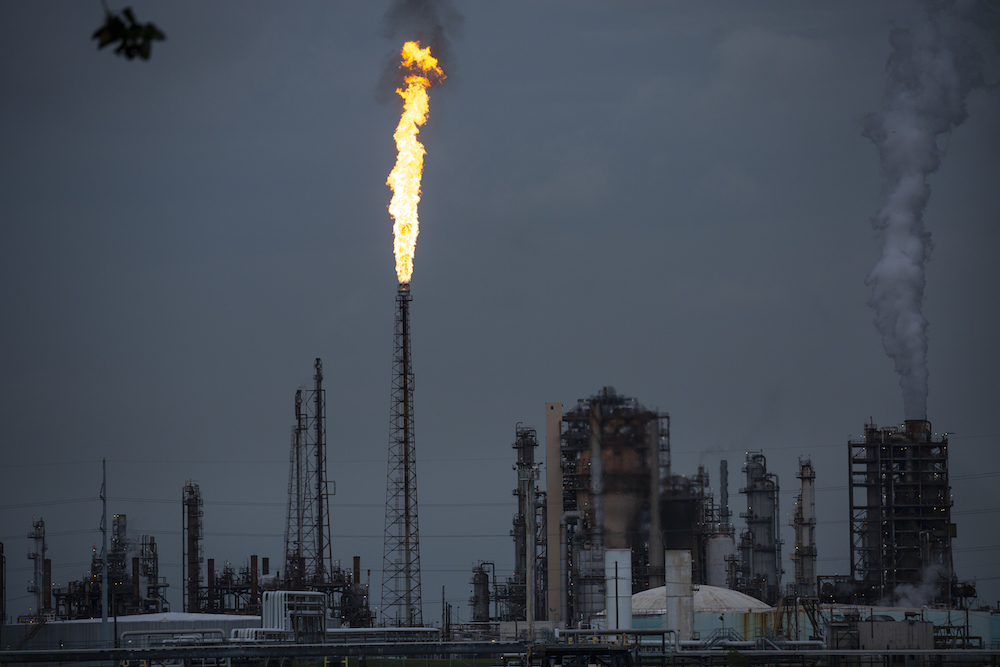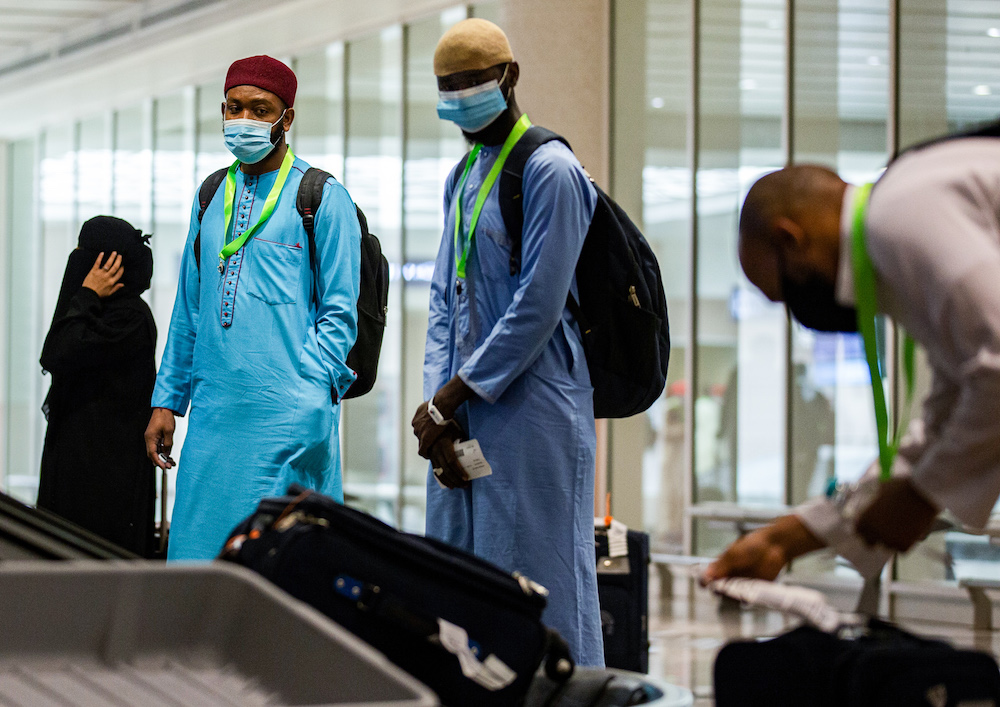DUBAI: The year just gone was the Great Accelerator. This time last year, the experts were predicting a slight downturn in global economic growth, continuing tensions in global trading patterns, and a tricky but negotiable time for oil markets as renewable sources slowly bit into demand.
Instead, 2020 was the year of the biggest economic downturn in nearly a century, a brief but dramatic collapse in world commerce, and the most tumultuous year for crude oil in 50 years. The COVID-19 pandemic seized every negative trend in the global economy — and made it worse.
In the Middle East, especially among the oil-exporting nations, the pattern was the same. Economic contraction and plummeting oil revenues exacerbated fiscal pressures that had already been building, with the result that governments had to live with a higher level of debt than they would have liked, while dipping into reserves to tide them over the downturn. Fortunately, most of them still have deep financial pockets.

Economic contraction and plummeting oil revenues during the COVID-19 pandemic exacerbated fiscal pressures that had already been building in the Middle East. (AFP/File Photo)
Against that background of unpredictability, it would be rash to make any firm projections for what 2021 will bring.
Ellen Wald, consultant and author of the book “Saudi Inc,” wrote: “The truth is that on this New Year’s Eve, we hang a new calendar and head into the future with no certainty.”
There are many variables, but the big one remains the course of the pandemic and the effectiveness (or otherwise) of measures to combat it. The coronavirus is the determining factor for the global economy — most analysts agree there is a direct linear correlation between ending the pandemic and resuming economic growth.
INNUMBERS
2021
* 5.2% - IMF projection of global GDP growth in 2021.
* 6.4% - Morgan Stanley forecast of global GDP growth.
* 4.6 - IHS Markit projection of global GDP growth.
The consultancy IHS Markit believes there is light at the end of the tunnel: “While the COVID-19 virus will stay with us throughout 2021, the rapid development and deployment of vaccines will enable a transition to a new post-pandemic economy. Thus, we approach 2021 with a mixture of caution and hope.”
On the other hand, there seems little likelihood the world will be able to officially declare the pandemic over in 2021. The World Health Organization issued its highest category designation — “public health emergency of international concern” — last January when there were fewer than 100 cases worldwide, and it seems virtually impossible death rates will fall back to that level this year.

Muslim pilgrims converged on Saudi Arabia's Mount Arafat for the climax of this year's hajj, the smallest in modern times and a sharp contrast to the massive crowds of previous years. (AFP/File Photo)
While global markets have taken heart from the speedy rollout of vaccines, financial and logistical challenges mean it will be a long time before vaccines reach all, or even most, of the world — assuming people can be persuaded to take them.
Against this backdrop, the economic forecasters are grappling. The International Monetary Fund - the most widely accepted guide to the health of the global economy — predicts that global GDP will rebound to 5.2 percent growth in 2021, after a 4.4 percent crash in the “Great Lockdown”, but admits “the forecast rests on public health and economic factors that are inherently difficult to predict.
Other experts are less conservative. Morgan Stanley, the American investment bank, thinks the rebound will be 6.4 percent globally this year. Its chief economist, Chetan Ahya, said: “We maintain that consumers have driven the recovery, and investment growth — a reflection of the private corporate sector's risk tolerance and a key feature of any self-sustaining recovery — is bouncing back as well.”
Ahya added: “By March or April, we expect all geographies and all sectors of the global economy to be joining the recovery, with a stunning 9 percent GDP growth in China driving the resurgence.”

Some experts believe a global economic recovery is on the cards, with GDP growth in China playing the leading role. (AFP/File Photo)
That rosy view is not shared by all commentators. “Headwinds to robust near-term growth include COVID-19-related lockdowns in early 2021, lingering consumer and business caution, diminishing fiscal support, and the strains of rising public and private debt,” said IHS Markit, trimming its own GDP forecast to 4.6 percent in 2021.
For the other big engine of global growth — the US — the signals are more confusing. The IMF predicted American GDP would fall by 4.3 percent in 2020 before recovering 3.1 percent this year. But that forecast was made before the divisive and disruptive November election, which still has the capacity to impact the US economy.
Europe remains the potential problem in 2021, bedeviled by the impact of Brexit and the recent surge in new forms of the virus. A big drop of 8.3 percent in 2020, according to the IMF, will be only partially compensated by a 5.2 percent rise in 2021.

Britain said on Thursday, December 24, 2020 an agreement had been secured on the country's future relationship with the European Union, after last-gasp talks just days before a cliff-edge deadline. (AFP/File Photo)
For the Middle East, the IMF predicted a 4.1 percent decline followed by a 3 percent increase in 2021, with Saudi Arabia down by 5.4 percent in 2020 before recovering 3.1 percent, roughly in line with the assumptions made in the Kingdom’s own December budget.
Others are more optimistic about the pace of the Saudi recovery. Nasser Saidi, economics expert, told Arab News that he was penciling in 3.5 percent GDP growth for the Kingdom this year, as recovery from the economic lockdowns coincided with the diversification measures of the Vision 2030 strategy to reduce oil dependence.
One of the debates in the Kingdom in 2020 was whether the government had provided enough fiscal stimulus to combat the effects of the pandemic. While the amount of stimulus was low in comparison with other G20 countries, the counter-argument is that Saudi policymakers took such swift action to slow the spread of the virus that the drastic fiscal interventions of other countries were unnecessary.
Saidi agrees. “They did not need to inject as much as other G20 countries,” he said.

A handout picture provided by Saudi Ministry of Media on July 25, 2020, shows travellers, mask-clad due to the COVID-19 coronavirus pandemic, waiting by a belt for their luggage at Jeddah airport as part of the first group of arrivals for the annual Hajj pilgrimage. (AFP/File Photo)
The other big imponderable in 2021 is whether the benign financial market conditions of last year can continue. Some pessimists spent much of the past year anticipating a big correction in global financial markets, which kept on soaring to new levels even as the global economy was heading deeper into the doldrums.
The S&P Index, the main barometer of global equity health, appeared to defy gravity, ending the year 15 percent higher at a new all-time record. The doubters pointed out that much of that increase was down to government stimulus packages that reached more than $11 trillion globally in the course of the year.
They also stressed that most of the equity value increase was due to the performance of a handful of US technology companies like Apple and Amazon, which exploited the new world of social distancing and telecommunicating during the pandemic. There appears little to contradict the argument that these companies have already reached a post-pandemic new normality, and that the equity rise will continue in 2021.

For the other big engine of global growth — the US — the signals and signs of economic recovery are a little more confusing. (AFP/File Photo)
In Saudi Arabia, financial markets also swam against the lockdown tide in 2020. The Tadawul had one of its best ever years, and generated big sums in initial public offerings. Against a background of ongoing economic recovery and improving oil revenue, most equities analysts see that rising trend continuing this year, when the privatization pace is due to accelerate.
For the Kingdom, as ever, much depends on the health of global energy markets. There were signs of a rebalancing and recovery in crude oil at the end of the year, with the OPEC+ alliance proving effective in limiting supply and putting a new floor under prices — $50 a barrel was sustained for most of December. Some analysts believe it could spike to as much as $65 in 2021.
If the coronavirus led to the “great reset” — in the words of the World Economic Forum founder Klaus Schwab — then economic forecasters must be hoping 2021 will see that fundamental rearrangement of the global economy continuing, but at a slower rate. The year just gone provided enough excitement to last a decade.
------------------
Twitter: @frankkanedubai














